Gregory A. Fournier's Blog, page 32
June 3, 2015
Inside the Mind of The Curious Incident of the Dog

Last week, I saw an amazing play in New York with the most creative use of theater space I've ever seen. The Curious Incident of the Dog in the Night-Time is a National Theatre production based on a 2003 mystery novel of the same name by Mark Haddon. The original London production--now running on Broadway--won seven Olivier Awards in 2013.
What first appears to the audience as the chaotic thoughts and erratic behaviors of a fifteen-year-old male with Asperger syndrome, proves to be a journey through the mind of someone who is a math savant. But this is neither a play about Asperger syndrome nor math. It is about Christopher Boone's investigation into the pitchfork murder of his neighbor's dog that leads to a larger mystery he is determined to solve.
Several days after I saw the play, I was thinking about the inventive set. Duh! It finally struck me. The stage is a representation of Christopher's mind. The mystery unfolds on stage with the background, left and right sides, and the floor configured like graph paper. The open ceiling shows the limitless night sky and the scope of the boy's ambition. The lighting effects and the tech work behind this production are an eye-popping assault on the senses.

This metaphoric construct depicts the inner reality of an autistic teenager who discovers much more than he could ever imagine. He can interpret only the literal and not the figurative. When Christopher sets out in search of his mother, he must interact with the London Underground system for the first time in his life. Navigating the subway for most people is nothing more than a routine nuisance, but for Christopher, it is a harrowing ride towards self-discovery.
I expect this mystery drama will do very well Sunday night at the 2015 Tony Awards. http://www.curiousonbroadway.com/
Published on June 03, 2015 09:56
May 21, 2015
Allen Park's Uniroyal Giant Tire--Fifty Years Old--Heralds Entrance into The Motor City

The original U.S. Royal Tire exhibit was a Ferris wheel attraction at the New York World's Fair of 1964/1965, held in Flushing Meadows Corona Park in the borough of Queens. The fair was open for two six-month seasons. In 1964, it was open from April 22th until October 18th, and in 1965, the dates were April 21st until October 17th.
The history of the U.S. Royal Giant Tire is pretty straightforward. Originally rigged as a Ferris Wheel and powered by a 100 HP engine, it was over eighty feet high. It carried over 2,000,000 people at the World's Fair, many of them famous world figures. There were twenty-four barrel shaped gondolas, each carrying up to four people for a total of ninety-six passengers paying a quarter apiece.
 At the Fair's end, the tire was disassembled and shipped by rail to Detroit and reassembled as a static display outside the Uniroyal sales offices in Allen Park, Michigan. It is the world's largest roadside attraction. The Uniroyal office has since moved, but the Giant Tire still stands.
At the Fair's end, the tire was disassembled and shipped by rail to Detroit and reassembled as a static display outside the Uniroyal sales offices in Allen Park, Michigan. It is the world's largest roadside attraction. The Uniroyal office has since moved, but the Giant Tire still stands.The tire is not made of rubber, but sightseers don't notice the difference whizzing past the landmark at seventy miles an hour on Interstate 94. The tire weighs just under twelve tons and is anchored in twenty-four feet of concrete and structural steel. It is rated to withstand hurricane force winds.
 When the Michelin Tire Company bought out Uniroyal and Goodrich in 1990, they renovated the landmark in 1994 with a fresh coat of paint, a modern looking hubcap, and neon lights for the Uniroyal lettering. Four years later in 1998, the Giant Tire was modified again to resemble a "Nail Guard" tire. An eleven foot long, 250 pound nail (world's largest) was sticking out from the tire to promote their new puncture proof product. The nail was put up for auction on eBay in 2003 and sold for $3,000, with proceeds donated to the Allen Park Historical Museum.
When the Michelin Tire Company bought out Uniroyal and Goodrich in 1990, they renovated the landmark in 1994 with a fresh coat of paint, a modern looking hubcap, and neon lights for the Uniroyal lettering. Four years later in 1998, the Giant Tire was modified again to resemble a "Nail Guard" tire. An eleven foot long, 250 pound nail (world's largest) was sticking out from the tire to promote their new puncture proof product. The nail was put up for auction on eBay in 2003 and sold for $3,000, with proceeds donated to the Allen Park Historical Museum.In 2003, the Giant Tire was once again renovated as part of the I-94 corridor revitalization. The neon lettering was replaced with reflective lettering and spotlighting. It has remained a Detroit landmark and an Allen Park roadside attraction for forty-eight years heralding the entrance into the Motor City from Detroit Metropolitan Airport in Romulus, Michigan.
It has been noted that the one thing the Beatles wanted to see on their American tour was the Giant Tire. Whether they stopped along the freeway to take a good look at it on their way into Detroit from Metro Airport isn't known, but when Paul McCartney and Wings were touring in 1976, the moment was commemorated.
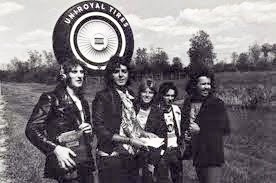
http://www.freep.com/article/20120312/COL14/203120336/Mark-Phelan-You-ve-seen-the-Giant-Tire-now-see-inside-of-it
Published on May 21, 2015 06:01
May 13, 2015
Detroit's Historic Fort Wayne Namesake--"Mad" Anthony Wayne
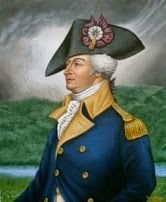 General Anthony Wayne--AKA Dapper.Throughout the Midwestern states of Ohio, Indiana, and Michigan the name "Mad" Anthony Wayne resonates in communities far and wide. Scores of towns, cities, counties, schools, parks, hospitals, streets, and businesses have been named after this Revolutionary War general.
General Anthony Wayne--AKA Dapper.Throughout the Midwestern states of Ohio, Indiana, and Michigan the name "Mad" Anthony Wayne resonates in communities far and wide. Scores of towns, cities, counties, schools, parks, hospitals, streets, and businesses have been named after this Revolutionary War general.General Anthony Wayne led his soldiers in essentially rear guard actions and harassing the British behind their lines. In several successful skirmishes with the enemy, he ordered surprise "bayonet only" attacks at night that inflicted many casualties. He was known as a courageous general--decisive and quick to act.
The legend behind the sobriquet "Mad" Anthony Wayne owes little to the general's military achievements. It has more to do with a drunk and disorderly colonist--known as Jemmy the Rover--who the general sometimes used as a spy. A constable arrested the man who began to drop the general's name. When the general heard this, he threatened Jemmy with "twenty-nine lashes well laid on if this happens again."
In disbelief, the now sober Jemmy replied, "He must be mad or else he would help me. Mad Anthony, that's what he is. Mad Anthony Wayne." The story made its way around town and became a favorite among the troops. The general's nickname had a rhythm and bravado that was repeated in the ranks until it stuck.
President George Washington called Major-General Wayne out of retirement to command the newly formed Legion of the United States. Wayne established the first basic training facility to prepare professional soldiers from regular army recruits.
Wayne mustered and trained a fighting force of 1,350 American soldiers and led them to the Northwest Territory (Ohio and Michigan) where they won a decisive victory against British forces and the Indian Confederacy at the Battle of Fallen Timbers, just south of modern-day Toledo, Ohio. The war ended and Major-General Wayne negotiated the Treaty of Greenville between the tribal confederacy and the United States signed on August 3, 1795.
Returning to Pennsylvania after the conflict, Wayne died from complications of gout on December 15, 1796. He was buried at Fort Presque Isle. His body was disinterred in 1809 at the request of his family--to be buried in a family plot. His bones make the journey to Radnor, Pennsylvania in saddlebags. For that grisly bit of history, consult the link below.
***
 Arial View of Old Fort Wayne.
Arial View of Old Fort Wayne.The star-shaped fort in Detroit, Michigan--which bears Anthony Wayne's name--began construction in 1842 at the Detroit River's narrowest point with Canada. Fear of a territorial war with British Canada prompted the fort's building. It was named to honor Major-General Wayne's defeat of the British at the Battle of Fallen Timbers in 1796. The victory resulted in the United States occupation of the Northwest Territories. Diplomats were able to settle territorial disputes and the war with Canada never materialized. The new fort never fired a shot.
***
Fort Wayne was first used by Michigan troops in 1861 at the outbreak of the Civil War. It became the primary induction center for Michigan troops for every field of American combat from the Civil War through Vietnam.
During World War II, every truck, Jeep, tank, tire, spare part, or war ordinance manufactured in Detroit went through the docks of Fort Wayne to the battlefronts. Also, Italian prisoners of war from the North Africa Campaign were housed at the fort. After Italy's surrender, Italian POWs were given the chance to return home to Italy. Many chose to settle in Detroit where there were greater opportunities awaiting them.
During the Great Depression of the 1930s, Fort Wayne's grounds were open to assist and house homeless families. During the Cold War of the 1950s, Nike-Ajax missiles were installed to prepare for a nuclear war that never came. During the Detroit riots in 1967, the fort was again used to house displaced families, the last leaving in 1971.
Today, the Detroit Recreation Department operates the fort with the help of the historic Fort Wayne Coalition, the Friends of Fort Wayne, and the Detroit Historical Society. The grounds are the home of the Tuskegee Airmen Museum, the Great Lakes Indian Museum, and historic Civil War reenactments. Special events are held throughout the year.

Fort Wayne was designated a Michigan State Historic Site in 1958 and entered into the National Register of Historic Places in 1971. The State of Michigan wants to upgrade the property into a multi-use facility while maintaining the fort's historical significance. Once the new International Transport Bridge is built in old Delray, the United States customs plaza will be located across the street from the historic site. More information on restoration plans can be found in the Detroit News link below.
***
 Bruce Wayne--Millionaire IndustrialistWhile researching this post, I discovered that Batman's alter ego--Bruce Wayne--was named after Scottish patriot Robert Bruce and "Mad" Anthony Wayne. In DC Comics, Bruce Wayne is said to be General Wayne's direct descendant, and stately Wayne Manor is built on ground given to General Wayne for his Revolutionary War service.
Bruce Wayne--Millionaire IndustrialistWhile researching this post, I discovered that Batman's alter ego--Bruce Wayne--was named after Scottish patriot Robert Bruce and "Mad" Anthony Wayne. In DC Comics, Bruce Wayne is said to be General Wayne's direct descendant, and stately Wayne Manor is built on ground given to General Wayne for his Revolutionary War service.Another little known fact is that in 1930, stunt man and young actor Marion Michael Morrison was originally given the stage name of Anthony Wayne by director Raoul Walsh. Fox Studios changed his name to John Wayne because Anthony sounded too Italian.
***
For more information on preservation plans for Historic Fort Wayne: http://www.detroitnews.com/story/business/2015/03/10/detroit-fort-wayne/24743635/
The story of General Anthony Wayne's exhumation may be more noteworthy than his military achievements. For more details, check out this link: http://www.americanrevolution.org/wayne.php
Published on May 13, 2015 07:00
May 5, 2015
Comic-Con Mother-Ship Lands in San Diego--July 9th-12th
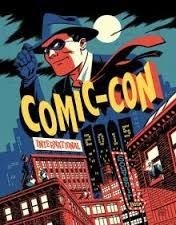 The San Diego Comic-Con International--known simply as Comic-Con--is a four-day event held during the summer at the San Diego Convention Center in lovely Southern California. This year's event takes place July 9-12.
The San Diego Comic-Con International--known simply as Comic-Con--is a four-day event held during the summer at the San Diego Convention Center in lovely Southern California. This year's event takes place July 9-12. Three hundred comic book enthusiasts attended Comic-Con's first event held at the U.S. Grant hotel in 1970. Organizers soon discovered that working with groups like the Society for Creative Anachronism and the Mythopoeic Society broadened its fan base and attracted a lot of new talent to their event. For the last several years, the gathering at the San Diego Convention Center has been at full capacity with 130,000 participants. The economic impact on San Diego is $180 million.
In the beginning, Comic-Con showcased primarily comic books and science fiction related items, but soon expanded to include a wide range of pop culture including animation, anime, collectible memorabilia, video games, web comics, and fantasy merchandise.
 Tony Stark makes an appearance at Comic-Con.Popular sponsored events include panel discussions, seminars, and workshops with comic book artists and writers. There are feature film previews and an independent film festival for movies and shorts without a movie deal. Film and television personalities attend this convention to create a buzz about their upcoming projects and take full advantage of the extensive media exposure.
Tony Stark makes an appearance at Comic-Con.Popular sponsored events include panel discussions, seminars, and workshops with comic book artists and writers. There are feature film previews and an independent film festival for movies and shorts without a movie deal. Film and television personalities attend this convention to create a buzz about their upcoming projects and take full advantage of the extensive media exposure.Comic-Con began awarding their Inkpot Award in 1974 to persons of interest in the Popular Arts industry. In 1988, organizers established the Will Eisner Award--named after the pioneering comic book writer and artist. Winners comprise the comic industry's Hall of Fame. Comic-Con has a large ballroom for exhibitors and an Artists' Alley for autographs and photo-ops from artists, writers, and celebrities.
 TigraOne of the standout features of Comic-Con are the costumes worn by many of the participants and the masquerade contest to determine the year's best. The spectacle is nothing less than Halloween on steroids. No shortage of superheroes, villains, plum smugglers, and buxom beauties.
TigraOne of the standout features of Comic-Con are the costumes worn by many of the participants and the masquerade contest to determine the year's best. The spectacle is nothing less than Halloween on steroids. No shortage of superheroes, villains, plum smugglers, and buxom beauties.The San Diego gathering is the Mecca of Geekdom. This year, their king--Conan O'Brien--has threatened to appear with Triumph, the Insult Comic Dog and tape a segment for his talk show.
Comic-Con is suffering from its own success and has outgrown the present San Diego Convention Center facility. Because of overcrowding, organizers have capped attendance since 2007. In October 2013, the San Diego Coastal Commission approved a $520 million expansion to add another 225,000 square feet to the facility.
A new 80,000 square foot ballroom is planned, and a second tower will be added to the Hilton Bayfront Hotel adjacent to the convention center increasing its capacity by 500 rooms. Comic-Con is expected to remain in San Diego for many years to come.

Comic-Con 2015 is already sold out, so begin planning for 2016. Information about obtaining an authorized Member I.D. number and purchasing tickets for next year's event can be found at this link: http://www.comic-con.org/cci/purchase-badges
Published on May 05, 2015 08:00
April 28, 2015
The Detroit Area Salt Mine
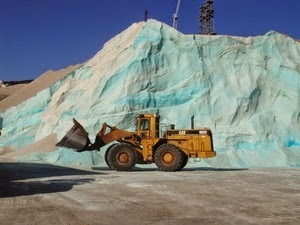 Bulk salt waiting to be loaded for shipment
Bulk salt waiting to be loaded for shipmentTwelve hundred feet below the surface of the state of Michigan lies the largest salt deposit in the world--seventy-one trillion cubic tons of salt deposits. Over four hundred million years ago, horizontal salt beds formed as the result of ancient oceans evaporating in what geologists have named The Michigan Basin--a circular pattern of sedimentary strata that began to sink over time.
 This depression of Precambrian rock is 16,000' deep at its center and tapers to 4,000' at its edges. The basin extends throughout most of Lower Michigan. As the basin began to sink about a billion years ago, salt water repeatedly back-filled the depression and evaporated leaving the salt deposits behind.
This depression of Precambrian rock is 16,000' deep at its center and tapers to 4,000' at its edges. The basin extends throughout most of Lower Michigan. As the basin began to sink about a billion years ago, salt water repeatedly back-filled the depression and evaporated leaving the salt deposits behind.This occurred during the Cambrian Period of the earth's development before the age of the dinosaurs. The only life on the planet were hard-shelled aquatic trilobites. These ancient salt beds were buried by the intrusion of heavier igneous rock from the earth's mantle--mainly basalt, and glacial activity from four ice ages.
***
Rock salt was discovered beneath Detroit in 1895. Eleven years later, work began on the first tunnel shaft--which was was completed in 1910--at the cost of many lives and the bankruptcy of the mine's original owners. In the early days of mine operation, mules were lowered in harnesses into the mine to live out their lives as beasts of burden. By 1914--due to the use of electric energy and advancements in mining technology--the mine was producing 8,000 tons of salt a month for the leather and food processing industries.

In 1922, a second, larger mine shaft was begun and finished in three years. The first shaft was now used to haul men and small materials. The new shaft was used to lower machinery used in the mine. Most equipment was massive and had to be disassembled on the surface--piece by piece--and reassembled in the machine shop below.
The mine has changed hands many times in its over 100 years of existence. International Salt closed the mine in 1983 because of falling prices, but its present operator--Detroit Salt Company--reopened the mine in 1998. Today, the only products the Detroit mine produces are deicing rock salt for roadways and bagged rock salt for consumer use. From the 1920s until the 1980s, guided public tours were allowed by the mine's management. Since the new owners took over, only rare private tours are given.
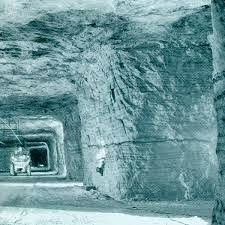 Salt PillarThe room and pillar method of extraction is used to mine salt. The rooms vary in width from 30' to 60'--with a height of between 17' to 40'. For safety reasons, a minimum of 30% of any cavity must be pillared. During the day and afternoon shifts, miners undercut a solid wall surface at floor level with an industrial-sized chain saw device that bites out a channel ten or more feet deep. This first cut leaves a smooth floor for picking up the salt after blasting. Deep holes are drilled at strategic places along the face of the wall and loaded with explosives that are set off electronically after the work shift.
Salt PillarThe room and pillar method of extraction is used to mine salt. The rooms vary in width from 30' to 60'--with a height of between 17' to 40'. For safety reasons, a minimum of 30% of any cavity must be pillared. During the day and afternoon shifts, miners undercut a solid wall surface at floor level with an industrial-sized chain saw device that bites out a channel ten or more feet deep. This first cut leaves a smooth floor for picking up the salt after blasting. Deep holes are drilled at strategic places along the face of the wall and loaded with explosives that are set off electronically after the work shift.The next morning, heavy equipment loads the large salt pieces and takes them to massive crushers where they are loaded onto conveyor belts and hauled to the surface in buckets capable of lifting 100 tons. Once above ground, the salt is screened and sorted for size. Some of the salt is conveyed to individual storage bins to await packaging. The rest is loaded into railroad cars, semi-trucks, or river barges and sold as bulk salt.

Here are some factoids about the Detroit salt mine:
the tunnel's shafts are deeper than the height of the Empire State Buildingthe mine's temperature is a constant 56-60 degreesthe mine covers an area of over 1,500 acresthe mine head is in Southwest Detroit and the mine extends beneath the eastern portions of Dearborn, much of Melvindale, and the northern reaches of Allen Park there are one hundred miles of roads cut through the salt beds the underground streets are 60' wide to handle the heavy loading equipment100,000 cubic feet of fresh air is pumped into the mine per minuteno living thing exists in the mine except the minersthe mine shaft opening is at 12841 Sanders Street, Detroit, Michigan 48217. In 1940, Detroit was the first major city in America to use rock salt for snow removal. The increased salt level buildup in the soil along Michigan roadsides has caused native roadside vegetation--like cattails--to be replaced with salt water tolerant plants--like sea grass. Over time, seeds from these invasive aquatic plants were inadvertently spread by transport trucks from ocean coastal areas to the Midwest. Now these plants have a foothold in the Michigan soil.
Published on April 28, 2015 07:01
April 22, 2015
San Diego's 2015 Gator-by-the-Bay Zydeco and Blues Festival
 2015 Gator-by-the-Bay poster and T-shirt artEvery Mothers' Day weekend for the last thirteen years, San Diego has been home to the Gator-by-the-Bay Festival-held at Spanish Landing on San Diego Bay. This year's event is May 7-10th. Michael Doucet & Beausoleil concert is scheduled for Thursday night, and a Gator at Night dance is on Friday--but the real action takes place over the weekend--May 9th and 10th.
2015 Gator-by-the-Bay poster and T-shirt artEvery Mothers' Day weekend for the last thirteen years, San Diego has been home to the Gator-by-the-Bay Festival-held at Spanish Landing on San Diego Bay. This year's event is May 7-10th. Michael Doucet & Beausoleil concert is scheduled for Thursday night, and a Gator at Night dance is on Friday--but the real action takes place over the weekend--May 9th and 10th. Five stages host zydeco and Cajun music as well as blues, swing, rock, country, and jazz. National, regional, and local musicians enjoy performing at Gator-by-the-Bay because of the beautiful venue and the lively crowds. Free dance lessons are given throughout Saturday and Sunday in partner dances and line dances. Especially welcome are the large, shaded, wooden dance floors located at each end of the festival site.
Five stages host zydeco and Cajun music as well as blues, swing, rock, country, and jazz. National, regional, and local musicians enjoy performing at Gator-by-the-Bay because of the beautiful venue and the lively crowds. Free dance lessons are given throughout Saturday and Sunday in partner dances and line dances. Especially welcome are the large, shaded, wooden dance floors located at each end of the festival site.This is a Mothers' Day, family friendly event with arts and craft activities for kids, assorted vendors, and over twenty food booths. Festival organizers ship in 10,000 pounds of fresh crawfish from Louisiana for the weekend and boil them right there with potatoes and corn on the cob. The Gator-by-the-Bay Festival typically draws up to 12,000 people, and a good time is had by all.

"Laissez les bon temps roulez!"
For more information, check out this link: http://www.sandiegofestival.com/
Published on April 22, 2015 04:55
April 16, 2015
San Diego, California 's Annual OMBAC Over-the-Line Tournament
 The Over the Line (OTL) tournament began in 1954 when members of the Old Mission Beach Athletic Club (OMBAC) organized their first event--their motto was Booze, Babes, and Beach Boys. These basic ingredients haven't changed much over the decades.
The Over the Line (OTL) tournament began in 1954 when members of the Old Mission Beach Athletic Club (OMBAC) organized their first event--their motto was Booze, Babes, and Beach Boys. These basic ingredients haven't changed much over the decades.OTL began as a local San Diego County beach competition, but it has grown into what it is now, an international event with over 1,200 teams competing. The OTL tournament has become San Diego's most iconic and largest summer venue attracting over 60,000 spectators and participants to Fiesta Island in beautiful Mission Bay over the second and third weekends of July.
This year's 62nd Annual World Championship will be held July 11/12 and July 18/19, 2015. The tournament has both a men's and women's division. Each division is broken into age categories. The men's categories include: Open, Century, Canardly, Cannever, Cadaver, and Camummy. The women's categories include: Open, Century, Caneasy, and Canalways.
 OTL is a bat and ball game played out on the sand--though a beach is not a necessity. It requires only three players per team: the batter and the hitter are on the same team. The fielders (other team) stand behind the line in fair territory. The pitcher tosses an official game ball up and the batter swings at it with a softball bat. If the ball is hit into fair territory without a fielder catching it, a run is scored. A hit can also be scored when a fielder drops the ball in fair or foul territory. Base running is not a feature of this game. Women use softball gloves, and men can use golf gloves.
OTL is a bat and ball game played out on the sand--though a beach is not a necessity. It requires only three players per team: the batter and the hitter are on the same team. The fielders (other team) stand behind the line in fair territory. The pitcher tosses an official game ball up and the batter swings at it with a softball bat. If the ball is hit into fair territory without a fielder catching it, a run is scored. A hit can also be scored when a fielder drops the ball in fair or foul territory. Base running is not a feature of this game. Women use softball gloves, and men can use golf gloves. An OTL court is laid out with rope staked into the sand. At one end of the court is a triangle whose longest edge is 55' (17meters) called The Line. The point of the triangle called Home is 55' from The Line. The pitcher and the batter both work from there. Parallel ropes mark the Fair Territory which extends as far as a ball can travel. Three fielders position themselves within Fair Territory.

An out is made if the ball is hit in the triangle, the batter swings and misses, the fielders catch the ball, the batter has two fouls, or a player bats out of order. As with baseball and softball, three outs ends a team's inning at the plate.
Runs are scored after the third hit in an inning and each hit after that. A home run is a hit that lands past the furthest fielder from the line--not over, just past--without being touched by the fielder. The batter scores a run and all of the unscored hits that preceded the homerun.
The tournament has a history of being a Bacchanalian orgy with distinct sexual overtones. The team names pride themselves on their consummate vulgarity. Local news stations report on the event but can't announce the team names over the air. Major news stories from the previous year are also the subject of comic team names.
 Miss Emerson contestants from yesteryear.The Miss Emerson contest is a favorite sidebar attraction for the male horn-dawgs in the crowd. Young adult women shed their tops--behind a cordoned-off area--in exchange for an official OTL T-shirt. At the awards ceremony, the new Miss Emerson is crowned and given a bouquet of flowers. The derivation of the Miss Emerson title started as a bad knock-knock joke that can be found in the link below--along with a listing of men's and women's team names from 2011.
Miss Emerson contestants from yesteryear.The Miss Emerson contest is a favorite sidebar attraction for the male horn-dawgs in the crowd. Young adult women shed their tops--behind a cordoned-off area--in exchange for an official OTL T-shirt. At the awards ceremony, the new Miss Emerson is crowned and given a bouquet of flowers. The derivation of the Miss Emerson title started as a bad knock-knock joke that can be found in the link below--along with a listing of men's and women's team names from 2011.Over recent years--to gain more wide-spread municipal support for the event--the bawdy atmosphere has been toned down somewhat to emphasize the sport rather than the spectacle. OMBAC has instituted the Seven Bs:
No BottlesNo BicyclesNo Bowzers (dogs)No BabiesNo Boas (snakes)No Bad Attitudes No Battles (fights)OTL is taken seriously by the players, many of whom have been competing for decades. Most people in attendance come to drink beer and enjoy the scenery. Organizers state up front that this is an adult event inappropriate for children.
OTL video: https://www.youtube.com/watch?v=tHcEmUM4w3s
Warning! Explicit 2011 OTL team names:
Published on April 16, 2015 03:00
April 10, 2015
Gone Girl Takes the Mystery-Thriller Up a Notch

Gone Girl by Gillian Flynn was published in June 2012, and I have only just read it. My overall response to her crime novel is she has raised the benchmark for the mystery-thriller genre to a literary level. At its heart, her story examines the inner workings and underpinnings of relationships.
Gone Girl is a dissection of one of the most complex of human relationships--the psychological warfare played out on the battlefield known as marriage. This is a He said-She said story ripe with ironies and lies. Gillian Flynn alternates her dual first-person narration between husband and wife Nick and Amy Dunne. Each point of view is unique and searing--one male, the other female. The delicate balance between the spoken and the unspoken is laid bare in their thoughts. Anyone who was ever in a dysfunctional relationship will hear echoes of their own interior monologue resonate through the words of these characters.
The couple's unapologetic and unrepentant narratives reveal their deep-seated psychological motivations and justifications for their corrosive actions. The primal forces have been transgressed and someone must be punished. But who? While Nick is following the algebra of Amy's thinly disguised wedding anniversary riddles, Amy is dishing out the calculus for his punishment. The reader is left to do the math.
 Gillian Flynn has been accused of misogyny in her portrayal of women, but Flynn reveals what readers have known since Shakespeare: the gentler sex can be as wicked, cruel, and vindictive as men. Anyone recall Lady Macbeth? How about the William Congreve quote, "Hell hath no fury like a woman scorned"?
Gillian Flynn has been accused of misogyny in her portrayal of women, but Flynn reveals what readers have known since Shakespeare: the gentler sex can be as wicked, cruel, and vindictive as men. Anyone recall Lady Macbeth? How about the William Congreve quote, "Hell hath no fury like a woman scorned"?I especially like Flynn's use of realistic language to depict authentic human interaction. When used, the coarse language gives the rest of the work a distinct air of verisimilitude. Lesser authors would have softened their use of blue language and gender invective in favor of being less offensive to readers--but there is plenty of fiction around to satisfy those tastes. Amy Dunne's cool girl soliloquy is a classic that tears down both men and women and takes aim at the games we play to be a part of a relationship.
 I have seen the 2014 film starring Ben Affleck and Rosemund Pike--in the lead roles of Nick and Amy Dunne--and thought the David Fincher movie was first-rate. A quick check of Gone Girl's credits revealed that the screenplay was written by Gillian Flynn, which accounts for the continuity from page to screen. One of the film's producers--who bought the movie rights--was actress Reese Witherspoon.
I have seen the 2014 film starring Ben Affleck and Rosemund Pike--in the lead roles of Nick and Amy Dunne--and thought the David Fincher movie was first-rate. A quick check of Gone Girl's credits revealed that the screenplay was written by Gillian Flynn, which accounts for the continuity from page to screen. One of the film's producers--who bought the movie rights--was actress Reese Witherspoon.Witherspoon wanted the role of Amy, but director Fincher didn't think she was right for the part. Given the great job Rosemund Pike did, I think he may have been correct.
Seeing the film before reading the novel did not diminish my appreciation of the ragged inner lives of the main characters or the spot-on portrayal of our media obsessed culture that roots out the worst and always assumes that the husband dunne (sic) it. Jillian Flynn's novel Gone Girl is emblematic of its age.
***
Here is a trailer for the movie: https://www.youtube.com/watch?v=Ym3LB...
Author Gillian Flynn speaks about misogyny regarding her depiction of women: http://www.theguardian.com/books/2013...
Published on April 10, 2015 06:55
April 3, 2015
The Rainy Day Murders--My Beta Readers

To take The Rainy Day Murders (RDM) to the next level, I have enlisted the aid of five highly-qualified beta readers. A beta reader is a non-professional reader who reads over the manuscript giving suggestions on how to improve the material. Beta reading is typically done before a book is published.
It was time for me to step back and see how people coming to the material for the first time would react to the manuscript of the Washtenaw County sex murders of the late 1960s in Michigan.
It is surprising how easy it is for a writer to overlook common mistakes. The eye sees, but doesn't see itself. Nagging grammar, spelling, and punctuation mistakes are mechanical errors that can be easily fixed, and fresh eyes are always appreciated to snare them. But organization and content matters are of more concern to me: Does the narrative move well? Are there continuity problems? Where are the hollow spots? Is the material believably presented? Do the facts and assertions appear accurate? Is the story a respectful treatment of difficult material? These are my areas of particular interest.
Working with this material for over four years has given me a form of writing blindness called authorial myopia. I needed some time and distance from RDM to gain perspective and recalibrate my vision to strengthen the manuscript.
Once my beta readers report to me, I will devise a specific plan for one last revision and begin looking for representation and a publisher. Barring that, I will self-publish RDM and make it available over the Internet.
The descriptions in RDM are often graphic but never lurid. I have endeavored to portray the victims with dignity and respect while--at the same time--providing the public with documentable information regarding the details of the seven young women's murders. This was not an easy story to write, nor will it be an easy story to read for some people. I have strived to make RDM as accurate as possible given the limitations of the historical record.
The facts and circumstances of these tragedies deserve to be told to prevent them from falling further through the cracks of governmental neglect and the deliberate obfuscation by John Norman Collins.
Here is a link to my post about the victims: http://fornology.blogspot.com/2013/01/the-rainy-day-murders-who-were-victims.html
Published on April 03, 2015 06:21
March 28, 2015
The Rainy Day Murders Visits the Book Doctor
Published on March 28, 2015 13:12




